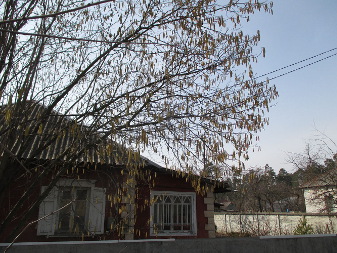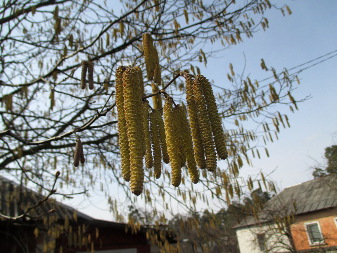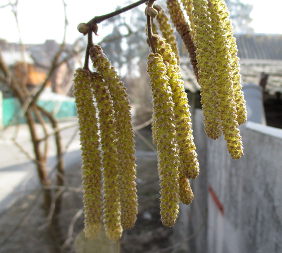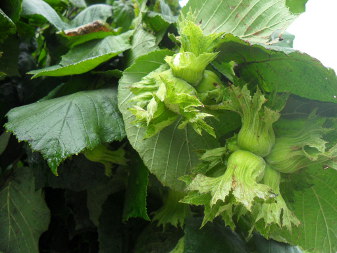




Common Hazel, Hazelnut (Corylus avellana), fam. Betulaceae.
Flowers in the earliest spring (and if the winter happens to be too warm – hazel perceives it as spring, and then will give no crop due to broken biorythms). Its catkins hang all the winter ready to open in the first warm days, when often there is still a lot of unmelted snow. Hazel occupies selected areas of the forest quite densely; however, by personal experience, almost no fruit is usually possible to collect.
Hazelnuts contain significant quantities of protein, fat, carbohydrates, and are high in calories. This given, they should be only consumed in limited quantities – no more than 50 g per day; otherwise, there is a danger of aggravation of allergic, skin, and some other diseases. The bark (helpful against varicosis) and the leaves (containing a lot of vitamins) are also used in medicine.